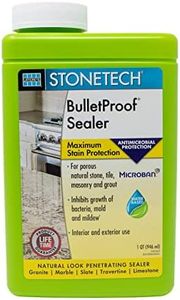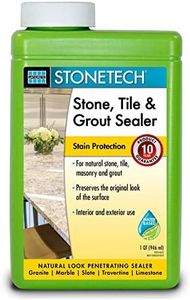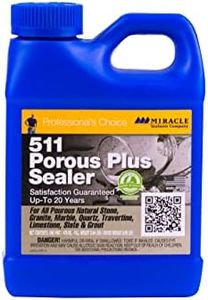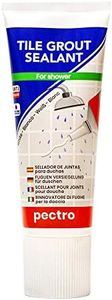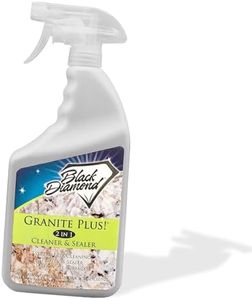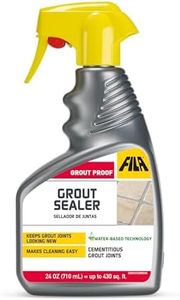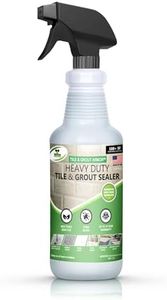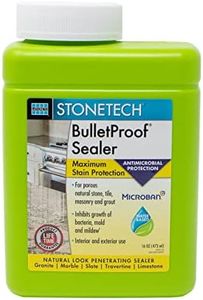We Use CookiesWe use cookies to enhance the security, performance,
functionality and for analytical and promotional activities. By continuing to browse this site you
are agreeing to our privacy policy
10 Best Grout Sealers
From leading brands and best sellers available on the web.By clicking on a link to a third party's website, log data is shared with that third party.
Buying Guide for the Best Grout Sealers
Choosing the right grout sealer is important if you want to protect your grout lines from stains, moisture, and mold. The right product can help your tiled surfaces look cleaner and last longer. When shopping for grout sealer, it’s key to understand the main features and specs so you can pick one that fits your needs, whether you’re sealing a high-traffic floor, a shower, or a kitchen backsplash. Considering where and how the sealer will be used, and matching the type of sealer to your project, will make the job easier and more effective.Type (Penetrating vs. Non-Penetrating/Topical)The type of sealer tells you how it works to protect the grout. Penetrating sealers soak into the grout and create a barrier inside, which is very effective at preventing stains and moisture from getting in. These are great for areas where water exposure is common, like showers or outdoor spaces. Non-penetrating, or topical, sealers form a layer on top of the grout, offering surface protection and sometimes enhancing color and shine. However, they might wear off faster in high traffic areas. You should choose a penetrating sealer for heavy-duty, long-lasting protection, especially in wet environments, while topical sealers can be enough for dry areas or if you want to add a shine.
Finish (Glossy, Matte, Natural Look)Finish refers to the final appearance of your grout lines after sealing. Glossy sealers will make grout lines look shiny and sometimes a bit darker. Matte finishes keep the grout looking more natural, without added shine. Some sealers are designed to leave no noticeable finish at all. Think about whether you want to enhance the grout’s color or keep its original look. For a natural appearance, opt for a clear, matte, or natural-look sealer. If you want your grout lines to stand out or look fresher, a glossy or color-enhancing finish may suit you best.
Application MethodDifferent grout sealers come with various application methods, such as spray-on, brush-on, or pen applicators. Spray-on sealers are quicker to apply, but may be harder to control and can spill onto tiles. Brush-on and pen applicators allow for more precise application, which is helpful for small grout lines or detailed projects. For large areas, a spray might save time, but for delicate jobs or if you want to avoid sealing the tile surface itself, a brush or pen is usually better.
Drying and Cure TimeDrying time is how long you need to wait before the surface can be touched or used lightly; cure time is how long before the sealer reaches full protection. Some products dry in an hour, while others take much longer to cure completely, sometimes up to several days. Faster drying sealers are useful when you need quick results, but always check the cure time if you want the best protection. Plan your project around traffic and water exposure so the sealer has time to fully cure before heavy use.
Water and Stain ResistanceThis spec describes how well the sealer prevents water and stains from soaking into the grout. The level of resistance can vary and is especially important in wet or stain-prone areas like bathrooms, kitchens, and patios. High resistance means better long-term protection against mold, mildew, and discoloration. Look for sealers with guarantees against water penetration and easy cleaning claims if your grout is exposed to frequent moisture or staining agents. For lower-risk areas, a basic level of resistance may suffice.
VOC Content (Odor and Safety)VOC stands for 'volatile organic compounds,' which are chemicals that can create strong odors and contribute to indoor air pollution. Some grout sealers are low-VOC or even VOC-free for safer indoor use and less smell during application. If you're sensitive to odors, working in a small or poorly ventilated area, or want to minimize chemical exposure, select a low-VOC or non-toxic product. In airy, outdoor settings, this is less of a concern.

